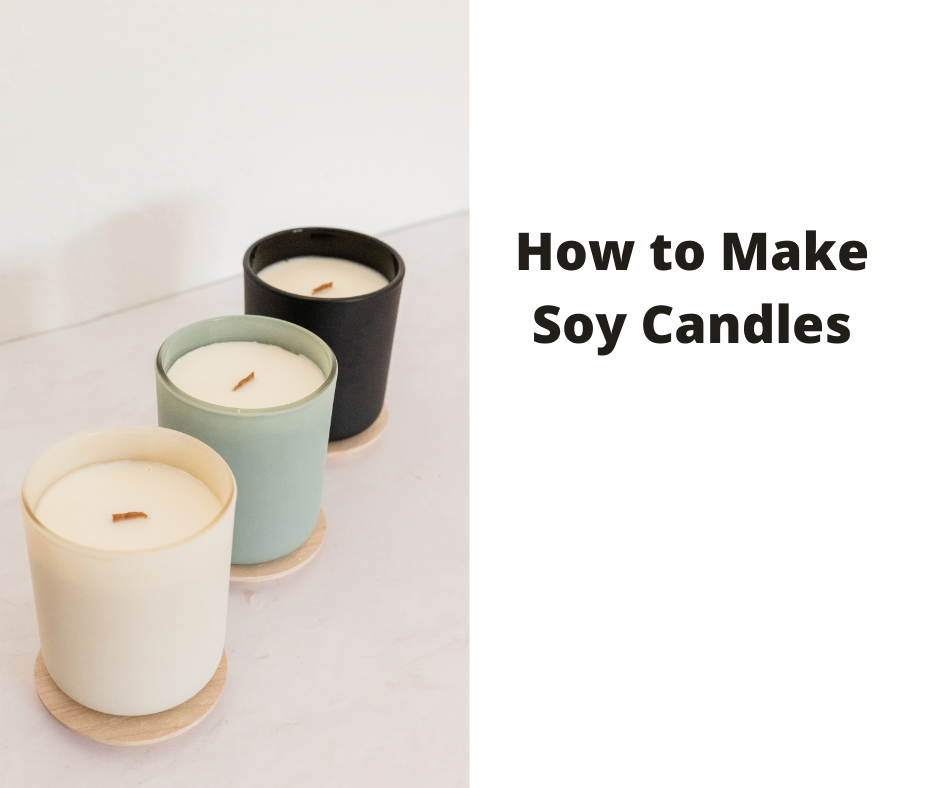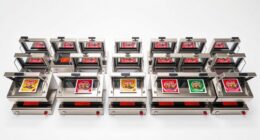Hello, fans of candles! Are you tired of the typical cotton wicks and seeking to add a touch of rustic sophistication to your candles? If that’s the case, you’ve come to the right place.
In this article, I’m going to show you how to make a wooden candle wick from scratch.
Now, before we dive into the nitty-gritty details, let me assure you that making a wooden wick is easier than splitting logs with an ax. Trust me, I’ve been there! With just a few simple materials and tools that are probably already lying around in your workshop, you can create a unique and cozy ambiance in your home.
We’ll start by choosing the perfect type of wood for our wick and then move on to preparing and treating it. Once our wooden wick is ready, we’ll attach it securely to our favorite candle container. And voila! Your homemade wooden wick candle will be ready to light up those long winter nights or add a romantic glow to any occasion.
So grab your toolbox and let’s get started on this delightful DIY project together!
Key Takeaways
- Safety precautions are important when working with wood
- Factors to consider when choosing wood: density, straight grain, minimal knots
- Steps to attach the wooden wick properly to the candle container
- Wooden wicks have advantages over cotton wicks
Gather Your Materials and Tools
Before you can begin crafting your own wooden candle wick, it’s essential to gather all the necessary materials and tools. Choosing the right tools is crucial for a successful project.
You’ll need a bandsaw or scroll saw to cut the wood, as well as sandpaper or a sanding block to smooth out any rough edges. A drill press will be necessary to create a hole in the center of the wood for the wick to go through. Additionally, you’ll need some safety equipment such as safety goggles and gloves to protect yourself while working with wood.
Safety precautions are important when working with wood. Always make sure to wear protective gear and work in a well-ventilated area. Keep your hands away from the blade when using power tools, and never force the wood through the saw – let it glide smoothly on its own.
Now that you have gathered all your materials and tools and are familiar with safety precautions, you can move on to choosing the right type of wood for your candle wick project.
Choose the Right Type of Wood
When selecting the ideal type of timber, it’s crucial to consider the characteristics that’ll ensure a successful and captivating flame for your homemade candle. The wood selection plays a significant role in determining how well your wooden wick will perform.
Here are three factors to keep in mind:
-
Density: Opt for a dense wood species like oak or maple as they burn slower and last longer than softer woods.
-
Straight grain: Look for wood with a straight grain pattern as it helps the wick burn consistently and evenly.
-
Minimal knots: Avoid using wood with excessive knots as they can interfere with the burning process and cause uneven flames.
Once you’ve chosen the right type of wood, it’s important to treat it properly to enhance its performance. Start by removing any bark or rough edges from the wood using sandpaper. This ensures a smooth surface, allowing the flame to spread evenly across the wick.
Next, soak the wooden wicks in water for at least 24 hours to prevent them from burning too quickly when lit.
With the appropriate wood selection and treatment, you’re now ready to move on to preparing the wooden wick for your candle-making project.
Prepare the Wooden Wick
To prepare the wooden wick, I cut the wooden dowel to size, ensuring it was the perfect length for my candle. Once cut, I took the time to sand the edges of the dowel to achieve a smooth finish.
This step is crucial as it helps prevent any splintering or roughness that could affect the burning performance of the wick.
Cut the wooden dowel to size
Start by measuring and cutting the wooden dowel to the desired size for your candle wick. It’s important to choose the right size of wooden dowel to ensure a proper burn and a long-lasting wick. When selecting from different wooden dowel sizes, consider factors such as the diameter of your candle jar, the type of wax you’re using, and the desired burning time.
To create an image in your mind, envision holding the wooden dowel in one hand while carefully measuring with a ruler or tape measure. Then, visualize making precise cuts with a sharp saw to achieve your desired length. As you cut through the wood, imagine feeling its texture and hearing the sound it makes as it splits.
By cutting the wooden dowel to size, you’ll have a custom-made wick that fits perfectly into your candle jar. Now you can move on to sanding the edges for a smooth finish without any rough spots or splinters.
Sand the edges for a smooth finish
Smooth out the edges of your DIY wick by sanding them to create a velvety finish that feels like caressing a cloud. Achieving a smooth finish is essential for optimal burning and aesthetics.
Start by using fine-grit sandpaper, gently rubbing it against the edges in circular motions. This technique will remove any roughness or splintering, resulting in a polished appearance.
If you don’t have sandpaper on hand, there are alternative materials you can use. Emery boards or nail files work well for smaller wicks, while pumice stones or steel wool are ideal for larger ones. Experiment with different options to find what works best for you.
Once the edges are smooth and refined, it’s time to move on to treating the wooden wick, ensuring its longevity and enhancing its performance as we explore in the subsequent section about ‘treating the wooden wick.’
Treat the Wooden Wick
After soaking the wooden wick in a solution, it becomes saturated and ready for use. Treating the wooden wick is an essential step in preparing it for candle-making.
There are various wood treatment methods that can be used to enhance the performance of the wick and improve its burn quality.
-
Sealant: Applying a sealant to the wooden wick helps prevent it from absorbing too much melted wax during burning. This ensures a steady and controlled flame throughout the life of the candle.
-
Fire retardant: Treating the wooden wick with a fire retardant solution adds an extra layer of safety by reducing the risk of accidental fires. It creates a barrier that slows down combustion, giving you peace of mind while enjoying your candles.
-
Fragrance absorption: Wooden wicks have natural pores that can absorb fragrances better than traditional cotton or paper wicks. By treating them with fragrance oils or essential oils before use, you can infuse your candles with delightful scents that last longer.
Using wooden wicks in candle-making offers several benefits, including a slower and more even burn, enhanced fragrance release, and an aesthetically pleasing crackling sound reminiscent of a cozy fireplace.
Now that we’ve treated our wooden wick, let’s move on to attaching it securely to the candle container without compromising its effectiveness as we continue our journey towards creating beautiful homemade candles.
Attach the Wooden Wick to the Candle Container
Securely fasten the wooden wick to your chosen candle container, ensuring it remains in place throughout the entire burn for a truly mesmerizing and worry-free candle experience.
When attaching the wooden wick to the candle container, it’s important to follow a few key steps to ensure proper attachment. First, make sure that the bottom of the wick is centered at the base of the container. This will help prevent any tilting or uneven burning during use.
Next, apply a small amount of hot glue or adhesive to the metal sustainer at the bottom of the wick. Press firmly onto the center of the container’s base, holding it in place for a few seconds until secure. If you’re working with a glass or ceramic container, you may need to hold it in place for longer to allow for proper bonding.
For containers with curved surfaces or irregular shapes, consider using double-sided adhesive tape instead of glue. Cut small pieces and attach them around the sustainer before pressing firmly onto the container’s base.
To further ensure stability, you can also use a clothespin or binder clip to clamp down on both sides of the wick while waiting for the glue or adhesive to dry completely.
By properly attaching your wooden wick to your candle container using these tips, you can create candles that burn evenly and beautifully every time.
Now let’s move on to pouring our candle wax…
Pour the Candle Wax
To pour the candle wax, I first melt it using a double boiler method. I place a heat-safe container with the wax inside a larger pot filled with water and heat it slowly over medium heat until the wax is completely melted.
Once the wax is melted, I can add fragrance and dye if desired to customize my candles. This step allows me to create scented and colored candles that suit my personal preferences or match a specific theme or occasion.
Melt the wax using a double boiler method
Gently place the wax in a heatproof container over simmering water, allowing it to slowly melt into a warm and inviting pool of liquid. When using a double boiler method to melt wax, it’s important to take safety precautions. Make sure to use oven mitts or gloves when handling the hot container, as well as keep a close eye on the water level to prevent it from boiling dry.
Additionally, ensure that there aren’t any flammable materials nearby and work in a well-ventilated area.
If you don’t have a double boiler, there are alternative methods for melting wax. One option is to use a microwave-safe container and heat the wax in short intervals, stirring in between until it’s fully melted. Another method is to create your own makeshift double boiler by placing a smaller pot or heatproof container inside a larger pot filled with water.
Once the wax has melted completely, you can move on to adding fragrance and dye if you’d like.
Add fragrance and dye if desired
Once the wax has reached a warm and inviting pool of liquid, you can enhance its allure by adding your desired fragrance and dye. The fragrance options are endless, allowing you to create unique and personalized scents for your candles. From calming lavender to invigorating citrus, choose the scent that matches your mood or creates the ambiance you desire. When it comes to dye techniques, there are several options available. You can use liquid dyes specifically formulated for candle making or experiment with natural alternatives like beetroot powder or turmeric. Adding color to your candles not only makes them visually appealing but also adds an extra layer of creativity to your craft. Once you have perfected the fragrance and color combination, it’s time to let the candle cure and harden, ensuring a long-lasting burn experience for you and your loved ones.
Let the Candle Cure and Harden
Now that you’ve poured the wax into the mold, it’s time to let the candle cure and harden. This step is an essential part of the candle curing process and ensures that your wooden wick candle will burn properly and last longer.
-
Patience is key: Allow your candle to cure for at least 24 hours before attempting to light it. During this time, the wax will solidify completely, ensuring a stable base for your wooden wick.
-
Benefits of wooden wicks: Unlike traditional cotton wicks, wooden wicks offer several advantages. They produce a soothing crackling sound reminiscent of a cozy fireplace, creating a calming ambiance in any room. Moreover, they have a slower burn rate and provide a more even melt pool compared to cotton wicks.
-
Test before burning: Before lighting your homemade wooden wick candle for the first time, trim the wick to approximately 1/4 inch in length. Then, conduct a quick test burn by lighting the candle for about 30 minutes to ensure it burns evenly without excessive flickering or smoking.
Now that your homemade wooden wick candle has cured and hardened, it’s time to enjoy its comforting glow and delightful scent throughout your home.
Enjoy Your Homemade Wooden Wick Candle
Indulge in the cozy glow and captivating fragrance of your handcrafted wooden wick creation, as it sets the stage for a tranquil retreat within your home. Making homemade candles with wooden wicks offers a unique and rewarding experience that goes beyond just creating a source of light.
There are several benefits to using wooden wicks in candles. Firstly, wooden wick candles have a longer burn time compared to traditional cotton wick candles. The natural wood material allows for a slower and more even burn, ensuring that you can enjoy your candle for extended periods. Additionally, wooden wicks produce a soothing crackling sound reminiscent of a cozy fireplace, adding an extra layer of ambiance to any space.
Moreover, wooden wicks create larger melt pools, which means they release more fragrance into the air. This results in a more intense and long-lasting scent throughout your home. The combination of the crackling sound and the strong aroma creates an immersive sensory experience that truly enhances the atmosphere.
Now that you’ve mastered making your own wooden wick candle, it’s time to experiment with different wick sizes and wood types to further personalize your creations. By varying these elements, you can fine-tune the burn time, scent throw, and overall aesthetic of your candles. So go ahead and unleash your creativity as you embark on this exciting journey of customizing your homemade wooden wick candles!
Experiment with Different Wick Sizes and Wood Types
When experimenting with different wick sizes and wood types for homemade wooden wick candles, I’ve found that trying different diameters and lengths is crucial for achieving optimal burn performance.
For smaller candle sizes, a thinner wick diameter may be more suitable, while larger candles may require a thicker wick to ensure a steady flame.
Additionally, exploring different wood species can offer unique scents and varying burn rates, allowing for a customized candle experience.
By testing out various combinations of wick sizes and wood types, you can create the perfect wooden wick candle tailored to your preferences.
Try different diameters and lengths for different candle sizes
Experiment with various diameters and lengths of wooden wicks to achieve the perfect fit for different candle sizes. When it comes to wooden wicks, size matters! Here are four key factors to consider:
-
Diameter: Different candle sizes require different wick diameters. A larger diameter is ideal for bigger candles, as it ensures a steady and even burn.
-
Length: The length of the wick determines how much of it will be exposed above the wax. Shorter lengths work well for smaller candles, while longer lengths are better suited for taller ones.
By experimenting with these dimensions, you can optimize the performance of your wooden wicks. It’s important to find that sweet spot where the flame burns consistently without excessive smoke or tunneling issues.
Now that we’ve covered the importance of sizing, let’s move on to exploring different wood species for varying scents and burn rates in our next section.
Explore different wood species for varying scents and burn rates
After experimenting with different diameters and lengths for various candle sizes, I decided to take my wooden wick making journey a step further by exploring different wood species. I quickly discovered that using different types of wood not only adds unique scents to the candles but also affects their burn rates.
For example, when using cedarwood, the scent is warm and earthy, creating a cozy atmosphere in any room. On the other hand, birchwood gives off a refreshing and slightly sweet aroma that uplifts the senses.
Additionally, wooden wicks have the added benefit of providing a longer-lasting burn compared to traditional cotton wicks. This ensures that your candles can be enjoyed for even longer periods of time.
Now, let’s move on to sharing our creations and inspiring others with our newfound knowledge in wooden wick candle making.
Share Your Creations and Inspire Others
Share your creations and inspire others by showcasing the beautiful wooden candle wicks you’ve crafted, igniting a spark of creativity in those who see them. As someone who’s delved into the art of making wooden candle wicks, I’ve discovered sustainable alternatives that not only enhance the burning experience but also add an exquisite touch to any candle.
When it comes to choosing wood species for your candle wicks, there’s a plethora of options to explore. Different woods emit distinct scents when burned, allowing you to create unique aromas for your candles. For example, using cedarwood can infuse your space with a calming and earthy fragrance, while birch provides a sweet and delicate scent. Additionally, each wood species has its own burn rate characteristics, influencing how long the wick will last.
To further elevate your wooden candle wick creations, consider incorporating unique candle container ideas. From vintage teacups to repurposed mason jars or even driftwood pieces found on the beach, there are endless possibilities for creating visually stunning candles that captivate attention.
By sharing our craftsmanship and innovative ideas with others who have an interest in candle-making, we can foster a community of inspiration and creativity. Let’s spread the joy of crafting wooden candle wicks and encourage others to explore their own artistic potential!
Frequently Asked Questions
How long does it take for the wooden wick to cure and harden?
Proper curing is crucial for wooden wicks as it ensures their durability and performance. The length of time required for the wick to cure and harden can vary depending on factors like wood type, thickness, and environmental conditions.
Generally, it takes approximately 24-48 hours for the wick to fully cure. Longer curing times may result in a stronger and more stable wick, leading to better burn characteristics and improved candle performance overall.
Can I use any type of wood for making a wooden candle wick?
When it comes to making a wooden candle wick, not all wood types are suitable. Some popular choices include cherry, cedar, and birch.
Cherry wood burns slowly and evenly, while cedar offers a pleasant aroma. Birch is known for its clean burn and minimal soot.
However, it’s important to consider the pros and cons of each wood type before deciding which one to use.
What are the different wick sizes available for wooden wicks?
There are various sizes available for wooden wicks, allowing you to choose the one that suits your candle best. When comparing wooden wicks to cotton wicks, it’s important to note that wooden wicks tend to have a larger flame and produce a crackling sound reminiscent of a fireplace.
They also burn slower and provide a more consistent melt pool. However, it’s important to consider the different wick materials and their impact on your specific candle-making project.
How do I attach the wooden wick to a glass candle container?
To attach a wooden wick securely to a glass candle container, start by measuring the height of the container and cutting the wick accordingly. Use a hot glue gun to apply a small amount of glue to the metal base of the wick and press it firmly onto the bottom center of the container. Allow it to dry completely before adding your desired decorations around the wick.
This ensures that your wooden wick stays in place while also adding an aesthetic touch to your candle.
Are there any safety precautions I should take while using a homemade wooden wick candle?
When using a homemade wooden wick candle, it’s crucial to prioritize fire safety and proper ventilation. First, ensure that the candle is placed on a stable surface away from flammable materials. Never leave the candle unattended and keep it out of reach of children or pets.
Additionally, make sure the room has adequate ventilation to prevent excessive smoke buildup. By following these precautions, you can enjoy your homemade wooden wick candle safely and responsibly.
Conclusion
In conclusion, making a wooden candle wick isn’t just a rewarding experience, but it’s also a chance to get creative with different wood types and wick sizes.
As I crafted my own homemade wooden wick candle, I was filled with a sense of accomplishment and excitement for the final result.
The process of treating and attaching the wooden wick may require some patience, but the end product is well worth it.
So go ahead, embark on this journey of craftsmanship, let your creativity soar, and inspire others with your unique creations.










